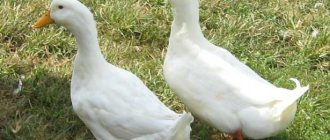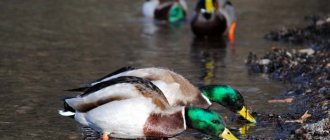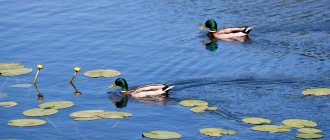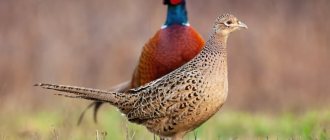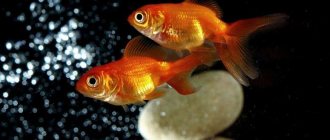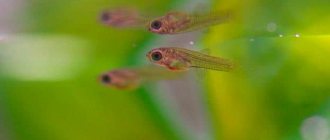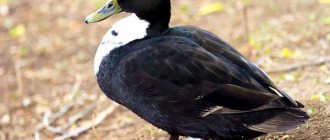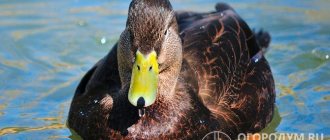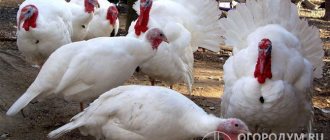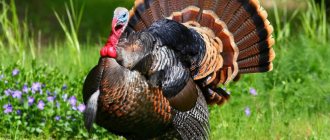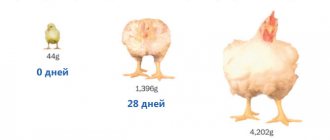On private farms for raising ducks, the best breeds will mainly be meat breeds or meat and egg breeds. Ducks of egg breeds are not a very profitable business, since their egg production is seriously inferior to that of laying hens.
The most popular meat duck breeds today are Bashkir, Peking, Muscovy, Mulard, Favorite Blue, Gray Ukrainian, Moscow White, Black White-breasted.
Meat and egg breeds of ducks worthy of attention are Cayuga, Saxony, and Khaki-Campbell.
Among the egg breeds of ducks, the Indian Runner ducks should be noted.
However, the name of duck breeds will not help much, so we offer you a description of duck breeds for home breeding with photographs.
Choosing ducklings
You need to buy chicks in early spring - at this time the best prices for birds are.
The meat will be ready by mid-April, when prices for duck are still very high, which significantly increases the profitability of duck farming. When choosing ducklings, you should pay attention to the following points:
- Place of purchase. It is better to use the services of an incubator, where there are documents for the birds and certificates for activities - the price is 5-10% higher, but there are at least some guarantees.
- Mobility and activity of the bird. Choose the noisiest and most active individuals that have shiny fluff (indicates good vitaminization of the body) and dry butts.
- A good appetite. If you take chicks, give them food, they should eat it with appetite. And this does not depend on whether they have eaten or not before. Literally 5 minutes after eating, the baby will peck food again if he is healthy.
The offspring must be transported in a homemade box - a cardboard box with holes on all sides for ventilation. Chicks are afraid of high temperatures and can suffocate if there is a lack of oxygen. If you drive for a long time, you can stop once for 1 hour and open the box so that the ducklings can breathe some air outside.
Features of growing meat breeds
The point of keeping a broiler duck is to obtain a large amount of tender meat that can be cooked in different ways. To do this you need to provide proper care.
- The room for birds should be spacious so that individuals do not experience stress in cramped spaces.
- Moderate humidity in the poultry house will help avoid diseases.
- Disinfection of the duck house before the flock moves in. During the care process, daily cleaning of litter, changing of bedding, and replacement of water and food are carried out.
- The heat level in the barn is +23..+24 degrees. You can ensure sufficient temperature using heaters.
- Provide at least 12 hours of daylight using artificial lighting.
- Insulate walls and floors.
If all conditions are met, all that remains is to provide adequate nutrition to the duck family. In addition, to strengthen the immune system and get some fresh air, the bird is sent for walks for several hours.
Duck house
Poultry house for large ducklings
According to recommendations for breeding ducks at home for beginners, the area of the poultry house and aviary for walking should be increased as the ducklings grow. Month-old ducklings will need 1 sq. m. for 8 individuals. The stocking density for adult two-month-old birds cannot be higher than 3.5 birds per meter.
The duck territory should be equipped with the following equipment:
- feeders - it is best to make wooden ones;
- drinking bowls - calculation of 0.6 liters of liquid per duck, the sides of the drinking bowls are 20 cm high;
- nests for eggs (1 nest for 3 ducks);
- artificial lighting devices;
- ventilation system and heating system.
To work with birds after slaughter, freezers and plucking machines are useful.
The walking area is fenced with a metal mesh. Place the “pasture” on a high area so that rains do not flood the site.
Microclimate and equipment
To maintain a large population of domestic ducks, it is necessary to provide a room for keeping them in winter and at night. It is necessary to maintain lighting and ventilation in the room, and eliminate drafts. It should be easy to maintain. The temperature should not fall below 5°C, and the humidity should be 65-70%. For birds, drinking bowls, feeders, and places for nests are provided. The size of the room depends on the number of individuals - it should accommodate 4 birds per 1 square. m. Ventilation should ensure a regular supply of fresh air.
The nests are made from boxes 40 cm wide, 50 cm long and 50 cm high. Straw is placed inside. The nest is made with a threshold in a quiet place in the house with a convenient approach for cleaning. One nest fits 5 ducks. In summer, nests are also built in the fresh air.
Water bowls for chicks are installed automatically, for adults - wooden containers 20 cm high. The water in the drinker should be fresh and clean. The consumption rate is 1 liter per individual. Feeders are assembled in the form of a rectangle with high sides and a bar at the top. Ducks eat sloppily, so the feeder is filled 1/3 full.
A container with mineral supplements is hung on the wall. It consists of three compartments. Each is filled with chalk, gravel and shells. The size of the feeder depends on the age of the individual. For 1 adult bird, it is necessary to provide a 12 cm length container for wet food. A feeder with dry food for adult birds is at least 6 cm high, for chicks 21 days old - 12 cm, for chicks 55 days old - 5 cm.
Litter is necessary to maintain the required environmental parameters and to disinfect the room. The litter should be dry and deep. Straw, peat, sawdust and shavings are used for bedding. The bedding is placed in the dry time of the day, after washing the floor. The floor is covered with slaked lime (at the rate of 1 kg per 1 sq. m). Then spread the litter in a layer of at least 20 cm. When the litter gets wet, it is replaced with a new one. If there are ducklings indoors, the bedding is changed daily.
Fence installation and duckling density
Raising ducklings at home requires a specially equipped place. You need two separate fences where the ducklings and adults will be kept (you should not combine them together, especially if the density of individuals per 1 sq.m is large, as there is a risk of ducklings being crushed). The density of week-old chicks in a cage should not exceed 18-25 individuals per 1 sq.m., but they do not need a spacious fence - then they will gain weight longer.
If ducks are raised for meat (and not for eggs), it is best to use the maximum density of individuals per unit area. Since mallards are a relatively calm bird and do not fly, a regular wooden fence or frame structure with supports and stretched metal or plastic mesh is suitable for them. When ducks begin to lay eggs, it would be better to place them in a larger room with a density of no more than 5-6 individuals per 1 m2.
Installing an inexpensive fence is done as follows:
- Every 4-5 meters a rod 8mm thick is hammered in, maybe more.
- A polyethylene mesh with a density of at least 90 g/m2 is stretched so that a healthy individual does not tear it later.
- Add soil to the edge of the mesh to prevent the bird from crawling underneath.
If ducks begin to fly (some breeds), the feathers on the wings need to be trimmed. Please note that Mularda ducks do not necessarily require a pond or indoor space. If you want to raise more demanding breeds, such as Muscovy duck or Pekin duck, then first of all you need to take care of the indoor space. Keeping them outside can have a detrimental effect on the health of the bird during the cold season (the temperature at night should be at least +10C).
If you are going to sell not only duck meat and eggs, but also feathers, you need constant access to a body of water. In this case, the quality of the fluff will be the highest (taking into account the addition of vitamin C and K to the diet).
Ventilation of the room is necessary. Despite the fact that the bird is resistant to diseases, the constant presence of a large number of individuals in a closed space can lead to illness. The room should be ventilated at least once every couple of days, or have open access to the street.
Diseases and their prevention
Ducks are resistant to diseases, but preventive measures should not be neglected. The cause of disease may be irregular cleaning. Because of this, ducks eat the food along with their feces.
The most common disease is infection with helminth parasites. They release dangerous toxins that affect the main body systems of birds. Sick ducks stop eating. Patients must be isolated from other individuals and treated. The room where the birds lived and equipment are treated with disinfectants. It is recommended to whitewash the walls of the room. To keep the 20 cm thick bedding dry, it is necessary to pour slaked lime under it, which will absorb excess moisture.
Options for choosing ducks for your own backyard
Beginning poultry farmers usually give preference to those varieties of domestic ducks that demonstrate maximum meat productivity with relatively simple care and low costs. Modern breeds and crosses for meat or meat-egg purposes are well suited for keeping on a personal plot. However, there are a number of factors that must be taken into account at the stage of preparation for acquiring a duck flock:
- Demands of pets regarding the composition of feed. Most broiler varieties are positioned by their originators as absolutely unpretentious, but this is not entirely true. Poultry of this type, as a rule, are specially bred for keeping on large farms and intensive fattening with a scientifically based selection of diets, which cannot always be provided on a private farmstead. Of course, ducks will grow and gain weight well even without full compliance with optimal conditions, but in this case their main economic parameters (earliness, slaughter weight and “meatiness” of the carcass) will differ markedly from the “record” ones.
- Ducks need grazing and regular “water procedures.” If the future owner cannot provide the pets with a place for free walking and swimming, it is better for him to give preference to those ducks whose health the absence of such “conveniences” will not affect.
- Coloring. On large poultry farms, duck breeds with white plumage are predominantly bred. This is due to the fact that light down and feather raw materials are in demand by light industry enterprises. In addition, it is easier to pluck such birds to “clean skin” and the carcasses obtained from them have the most presentable presentation. Owners of country and rural plots pay attention to the decorative qualities of their pets and often choose breeds with plumage that is brightly and catchily colored.
- Specifics of behavior. Domestic ducks can hardly be called “quiet”. Some breeds are very noisy and loud, others are timid, nervous, and prone to hectic running around. Such features must be taken into account, since choosing pets with a “complex” character can create unnecessary problems.
- Possibility of herd renewal. Many summer residents prefer not to raise ducks on their own. They simply purchase day-old ducklings from the nearest market or poultry breeding plant and fatten the young animals until they reach slaughter weight. For this option, it is better to buy poultry that belongs to the “meat” crosses. She does not have maternal instinct and her qualities are not inherited by offspring, but in this case this is not required. Those who want to breed ducks in their own backyard must choose from those varieties whose economic parameters are genetically fixed. True, not all such ducks are capable of being brood hens themselves, but this is not critical, since eggs can also be incubated artificially.
- Cost of incubation material and young animals. Today's domestic market is not at all pleased with the variety of offers. The catalogs of most sellers offer material from only 4-5 duck breeds and crosses, and the risk of stumbling upon a “re-grade” is quite high. Purebred ducklings are expensive. Therefore, future owners should choose the supplier very carefully and carefully evaluate the documents that it can provide to buyers. If the purpose of purchasing young animals is solely to fatten them for meat, it makes sense to abandon purebred birds, giving preference to interbreed hybrids or “mulards”.
Natural bodies of water located nearby are a great help in keeping waterfowl.
When planning to purchase duck breeds for home breeding, you should take into account factors such as the area of your garden plot and the size of the room that will be allocated for the bird. Some large varieties can do without grazing and open water, but need a spacious house. Other ducks fly well; their exercise yard must be equipped with a high fence. Many get along well with other residents of the farmstead, but there are also those who prefer to stick to their “family” and not contact anyone else. It is better to take all these nuances into account before purchasing young animals, approaching the choice of waterfowl pets carefully and consciously.
Blue Favorite
Some breeds of ducks have been known since ancient times, but there are also completely new breeds, bred at the end of the last century. Among them are ducks of unusual color - blue is a favorite. They were registered as an independent breed in 1998 by breeders of Bashkortostan. In fact, the Blue Favorite is a hybrid of Peking, Bashkir and Black-breasted ducks.
The color of the plumage of blue favorites varies from light blue to rich smoky with a pronounced blue-blue tint. When crossing light and dark individuals, offspring of various colors are obtained: black, dark blue, white with a bluish tint.
Blue favorites have a plump, elongated body. Large proportional head with a “flattened”, rather long beak, small eyes. High, muscular neck. Dense, developed, widely spaced legs.
The production characteristics of the blue-gray bird are as follows:
- the weight of two-month-old ducks is 2.7-3.6 kg, adult drakes 4-4.5 kg, females - 3.5-4;
- Poultry has lean dietary meat with good taste;
- ducks lay 100-150 eggs during the season, egg weight is 85-90 grams.
We offer you a complete overview of the Blue Favorite duck breed.
Obtaining and incubating eggs
The most important issue when breeding ducks is raising the chicks. And it begins with the selection and incubation of eggs. First you need to figure out which duck you can work with and get offspring from it. The selected birds are observed for several months. Healthy, well-built and strong birds are left for breeding. The ratio of males and females is 1 drake per 5-8 ducks. When working with a duck, it must be provided with long daylight hours: this directly affects the number of eggs obtained.
The birds left behind must be provided with decent care, feeding and protection from disease. Eggs for incubation are taken only from healthy birds. You can watch the video to see which egg is needed to hatch. In general, eggs should be intact, without cracks or dents. Blue discoloration on the shell indicates that they have begun to deteriorate - this can also be understood by the unpleasant smell. However, you should not take eggs that are too large. A duck is not a goose, and even in the largest breeds the weight of one egg cannot be more than 0.1 kg.
Long-term storage negatively affects the condition of the embryo, so you can store the egg for no more than 5-8 days. Ideally, it should be immediately placed under the duck. These birds can fly both during the winter and summer months. And this period is easy to recognize. Very characteristic metamorphoses occur with the duck. She begins to separate from the main mass of birds and is constantly busy arranging the nest. She also plucks out her down and lays it in the place chosen for laying.
Hatching eggs by a hen
The use of a hen for brooding is used by many poultry farmers. This method, if done correctly, is more effective than artificial incubation. From the very first day after planting, the clutch is under the supervision of the duck. You just need to make sure that the bird does not forget about food and drink. She must also return to the nest on time. It is advisable that the nests be separated from each other, then no one will disturb the hen. Soft, lightweight materials are suitable for bedding in nests.
There are also certain problems when breeding chicks using this method. Sometimes it happens that a duck does not leave the clutch, and then it needs to be reminded about food. It also happens differently: after eating, she does not return to incubation, and she must be manually returned to the nest.
Some breeds are not good brood hens. For example, Peking ducks. The main problem with these white birds is that they do not strive to breed. Indo-ducks, which many people like to keep in their dachas, compare favorably with them.
Hatching duck eggs in an incubator
When hatching in an incubator, pre-selected eggs are used, which are usually stored at a temperature of 10-12°C. Storage should not last longer than one week. When the eggs are just placed in the incubator, the temperature in it is maintained at 37-38°C. It must be remembered that a duck egg takes a long time to warm up, and when about 2/3 of the time required for hatching has passed, the temperature must be lowered to 30-31°C.
The time required for the embryo to fully develop depends on the specific duck breed and takes from 4 to 5 weeks. And regardless of what particular breed needs to be bred, the process of embryo development should be monitored. For this purpose, ovoscopy is performed. This process allows you to observe how the incubation is progressing. Making an ovoscope at home is not difficult. Take a box in which a hole is cut out slightly smaller than the size of the egg, and a backlight from a regular lamp is attached to the bottom.
The egg is placed in the hole and illuminated from below. On the 6-7th day of incubation, you can see that the circulatory system has begun to form in the egg. After 15-17 days, you can see that the embryo has already formed and is gradually moving. If development stops for any reason, then the insides of the egg are motionless.
Many poultry farmers do not recommend ovoscoping for beginners. It still does not allow you to influence the development of eggs, and if carried out incorrectly, it can harm the embryos.
Breeding
The first batch of chicks will have to be purchased in full. But in order to save on the next broods, it is advisable to arrange a separate area for several families. So, for breeding it is optimal to use 1 drake for 5 females. To constantly maintain the number of individuals on the farm at about 1500, it is enough to purchase 10 such families.
It is advisable to collect the eggs daily as soon as the duck lays them. First, they are kept for approximately 15-18 days at a temperature of 15 degrees. To keep track of deadlines, each egg is marked with a removal date. A full batch is placed into the incubator.
Periodically, breeding individuals are replaced with younger ones. Ducks reach sexual maturity at 5-6 months. For this purpose, the largest, strongest, healthy-looking, but lean ones are selected from the entire brood. In this way, it is possible to ensure constant reproduction of offspring at the proper level.
Khaki Campbell
When breeding this breed, breeders set themselves the goal of obtaining a bird that would not only lay eggs well, but also have a meat orientation. An English breeder managed to make this a reality, after whom the duck was named.
Khaki Campbell
Khaki Campbell can be recognized by the following features:
- Feathers can have different colors - from light brown to light white.
- The weight of the male is 3.6 kg, the female is 2.5 kg.
- The breed is classified as early maturing, since after six months the female is ready for mating.
- A duck can produce 200-250 eggs per year. The mass of one will be 80 g.
- The birds' heads are small, as is their beak and neck.
The advantages of the Khaki breed include:
- High egg production.
- Duck meat is tender and tasty.
- Birds quickly acclimatize to new conditions.
On video - breeding Khaki Campbell duck:
The Khaki Campbell breed has one drawback - females are not able to hatch eggs for a long time, so if a person does not intervene, then part of the litter may die.
By characteristics
According to their characteristics, ducks are divided into meat and egg breeds.
Meat breeds of ducks
These ducks quickly gain weight and are large in size and shape. As a rule, they are omnivores and unpretentious, do not require a specific diet.
The largest meat ducks:
- Beijing,
- Bashkir,
- Ukrainian,
- mulards,
- musky,
- favorite,
- black white breasted,
- Rouen and Aylesbury are also found.
Egg ducks
If we talk about the most famous representatives of this breed, then these are Indian runners. This is a classic option. Paroda is a record holder for egg production: from 200 to 250 pieces per year. But khaki-Campbell and mirror are mixed-type options. They are versatile and serve both for the production of meat and eggs. They give averages for all parameters.
Meat direction
Representatives belonging to this group give the best indicators in growth rate and body weight gain.
Blue favorite
Blue favorite
It is distinguished by its dense, compact body and early ripening. It has powerful paws, a large head, and a short neck. The body is elongated with small, tightly fitting wings.
With proper fattening, drakes of this variety gain weight up to 3 kilograms after two months. Subsequently, growth slows down, and at 5-6 months the drake reaches 5 kg, and the female - 4 kg. Blue favorite meat is dietary.
Another name for the variety is Pharaoh. A distinctive feature is its noble color: the feather is soft blue, smoothly turning into rich blue, sometimes with ashy splashes.
Does not require special conditions for breeding. A warm and dry room is enough; there is no need to build pens. Representatives of this breed can withstand both heat and cold winters, boast strong immunity and high adaptability to living conditions.
Swedish blues
Swedish blue ducks
A variety of medium-heavy type. The male reaches a weight of 4 kg, and the female - 3 kg. The body is muscular, toned, dense with a wide and straight back. Oval head with a flat, flattened beak. The tail is short and erect. Despite the name, the color of the plumage varies from gray-black to light gray.
This type of poultry has one drawback - slow weight gain.
Ducks are unpretentious in food, but require intensive feeding. For good growth, spacious, light pens are necessary - this has a beneficial effect on weight gain and meat quality. Meat is considered fatty.
Moscow Whites
Moscow white ducks
They belong to the heavy breeds. The body is large and fleshy. Straight back, turning into a short tail. The chest is convex, large with a massive beak. Color white.
The weight of an adult drake reaches 5 kg, the female is 1-2 kg lighter.
Ducks quickly gain weight (at the age of 2-3 months the duckling reaches a weight of 3 kg and is ready for slaughter), are unpretentious in keeping and are adapted to extreme temperature changes. The meat is tasty and belongs to dietary varieties.
Gray Ukrainian
The Ukrainian gray duck breed is classified as a heavy-weight variety.
Gray Ukrainian ducks
The body of ducks is strong, knitted, resting on massive, widely spaced legs. The neck is short, the head is small, slightly elongated. In their color, they resemble the wild breed gray mallards - the feathers are gray, sometimes clay-colored.
With sufficient feeding, already at two months the bird is ready for slaughter, as it gains a weight of 2-3 kg. The duck meat is tender and medium fat.
The bird is unpretentious in keeping. She needs a lot of free space. To improve growth in the summer, it is advisable to add more greens to the diet, and feed with vitamins in the winter.
Rouen
Rouen ducks
Domestic Rouen ducks are smaller in size than the breeds described above. They have a wide body with a deep-set sternum and strong short legs. The oval back tapers towards the tail, the small head is set on a strongly curved neck.
The color of the feather as a whole is close to a red-brown hue. The wing is lighter, sometimes with a white border along the edge.
An adult male weighs 4 kg, a female – 3-3.5 kg. The meat of these ducks is dark in color, juicy, soft, and lean.
Keeping the breed is troublesome. Birds are prone to obesity, so special attention is paid to feeding. It is better to use balanced food and clearly establish a feeding schedule. Long walks are undesirable for them, and the presence of a body of water near the breeding site is mandatory.
Musk
Muscovy ducks
Another name for the breed is Indian ducks. Popular among farmers due to their high productivity. A drake can gain weight of more than 6 kilograms, and a female – 4-5 kg.
There are several varieties within the breed, differing in color - from light to blue-black.
In addition, Indian ducks are unpretentious - they don’t even need a pond. They adapt to any conditions and have strong immunity. Not picky about food.
Muscovy duck meat is soft, tasty and lean.
Black white breasted
Black white-breasted duck
Externally, ducks stand out due to their white breast and the dark color of the rest of the body - hence the name. The body is long, massive, with a wide back. Large chest, small head with a short beak on a long neck. Wide wings that fit tightly to the body.
When breeding this variety, the goal was to obtain good weight indicators. As a result, the breeders received a variety that gains weight well. Already at 2-3 months the bird gains up to 3 kg and is ready for slaughter, and by six months the weight reaches 4-5 kg.
Be sure to read:
Blue favorite ducks: breeding at home, cultivation and characteristics of the breed
Black white-breasted birds need an equipped poultry house, and there must be open water. You should pay attention to keeping them in the cold season: these birds cannot tolerate frost.
You can feed them with standard food, but in winter it is worth feeding them with vitamins and minerals.
Mulards
An artificially bred variety.
Mulards
Individuals are white in color and have a black spot on their head. Knocked down dense body of elongated shape. On the elongated neck there is a medium-sized head with an elongated gray beak, a small tail and low paws.
Some representatives reach a mass of 7 kg. The bird is ready for slaughter after 3 months.
Ducks are unpretentious in keeping. The disadvantage of mulards is that they are a hybrid of two varieties that do not produce offspring. Usually, to obtain a hybrid, musk drakes are crossed with breeds such as Pekingese or Orpingtons, and less often with others.
Turkey breeding
Turkey meat is becoming increasingly popular in the health food market. Breeding this type of bird today is considered very profitable.
Turkey meat is popular in the health food market
Choosing a breed
Typically, the choice of breed is made after all the characteristics of the location of the future turkey poultry farm are known, such as the climatic features of the region. However, there is a list of turkey varieties that are most profitable to breed.
Big 6
A highly productive meat breed, it gains weight much faster than other varieties. The weight of an adult male is approximately 19 kg, and that of a female is 11 kg.
Big 6 turkeys
Bronze broad-breasted
Very suitable for breeding for meat, the weight of turkeys reaches 15 kg, turkeys - 9 kg. The disadvantage of this breed is its complete unsuitability for a pasture diet, since it was bred to be kept inside a poultry house. It is characterized by high fertility - up to 120 eggs per year.
Bronze broad-breasted turkeys
North Caucasian bronze
Suitable for pasture feeding. The weight of males is 14 kg, females are about 10 kg. Egg production is reduced - up to 80 eggs.
North Caucasian bronze turkeys
White broad-breasted
Quickly acclimatizes to any conditions, egg production is maintained at a level of 120 eggs per year. One of the most profitable breeds, as turkeys reach up to 25 kg. live weight, females remain at 10 kg.
White broad-breasted turkey
Cross Big 6
Heavy, meat breed, characterized by instant growth. It is bred and purchased to produce tasty and nutritious dietary meat. A negative feature is the need for artificial insemination of birds to breed this variety.
Breeding chicks
The turkey house should be spacious, equipped with straw nests, the width and length of which are 40 cm. There are about 15 eggs per female, so there should be enough space.
Hatched chicks must be immediately given boiled water with the addition of green tea and sugar to boost their immunity. This solution replaces water for the first four days of life, then it is introduced into the diet.
Grown up turkey chick
Young turkey poults should always have the light on, which should be gradually reduced by 30 minutes so that by the 20th day of life, 15 days of light is enough for them. The temperature should not be high, but also too low, since chicks are highly susceptible to colds.
Since turkeys are characterized by rapid weight gain, it is better to spend money and buy feed for their food, which already includes vitamins, amino acids and minerals. However, to save money, you can feed the bird a mixture of corn, barley and bran, as well as cottage cheese, carrots and even fish giblets. To saturate food with vitamin A, you can add dry yeast. It is necessary to have mineral additives, which can be ordinary chalk.
Turkey chick
Conditions of detention
Turkeys are headstrong birds, so even at a young age they should not be kept with chickens, geese or ducks. In the southern regions, turkeys can be raised without a special room, since they are very resistant to weather changes, but in the northern regions, an insulated building is required.
Pens for walking turkeys are fenced with metal mesh or any other material. Feeders and drinkers are installed inside the turkey poultry, preferably vacuum ones. The temperature regime of 27 degrees is provided either naturally or with the help of special heaters.
Turkeys resting on the roost
Drinkers should be rinsed several times a day, avoiding heating the water, which should remain cool and clean. You also need to constantly keep the poultry house clean, otherwise the development of infections cannot be avoided.
An important point is to adhere to the feeding regime for turkeys and turkeys. Food is provided 4-7 times a day at the same time. This schedule significantly affects egg production and body weight gain.
Turkeys in the pen
Let's sum it up
Turkeys are reared specifically for the purpose of obtaining and selling meat, but eggs and chicks can also be sold. Caring for this bird is not as easy as others, so experienced poultry farmers should choose it.
Now that you have learned about the features of breeding the most popular bird species, you can get to work fully armed and achieve real success.
Expansion of area, bedding, light
- As the ducks grow, the housing area is expanded; by the age of 1 month, birds are subject to the norms for mature birds - 3 heads per 1 m2. It is necessary to ensure that the floor in the room is clean and warm, so that there are no drafts.
- For bedding, use straw or sawdust. Large shavings do not absorb moisture well, so they are used for nests of mature birds. The litter is replaced after 2 days or according to the degree of contamination, this is influenced by the population density.
- The lighting day for young ducks is equal to a day in the 1st week, in the 2nd week the interval is reduced to 17 hours, and with the onset of the 3rd week, the light for young ducks can be reduced to 12 hours a day. The light intensity in 1 week is 20 lm, and subsequently remains at 5-7 lm.
Feeding the bird
As for feeding ducks, their food is quite simple. In summer, birds eat a lot of grass, which significantly reduces feed costs. However, vegetation alone is not enough for full growth, so it is necessary to feed the ducks with wheat and mixed feed throughout the day. The latter is best given in the form of wet mash (compound feed mixed with grated beets, boiled potatoes or other additive).
You can also reduce your feed costs by thinking about the location of your farm from the start. If there is a pond nearby, the birds will find an additional source of food: they eat plankton and algae.
In summer, ducks need to be fed 2 times a day, in winter - 3. In order for a bird to gain weight of one kilogram, it needs to eat 3.5 kg of feed.
Birds should always have food in their feeder so that they can refresh themselves at any time.
Ducks Agidel
Agidel ducks are bred for meat. It is worth noting their main features - they have a strong immunity to many diseases, and if other breeds are much more susceptible to infection, then Agidels will not get sick at all, and also adapt to any weather conditions.
Breed characteristics:
- high egg production - 250 eggs per year;
- the fat content of meat is 5-6% less compared to other breeds;
- The bird's readiness for slaughter is determined by its external signs - the feathers should not be formed, otherwise there will be a lot of stubble on the body;
- It is not at all necessary to have a body of water nearby; a bowl of water will be enough;
- The plumage of the ducks is completely white and this did not happen by chance - the parent flock was carefully selected by color.
Ducks are not picky about their food, and no matter whether it is high-calorie or not, even the cheapest will do. Ducks need a pond within walking distance, but a small pen with a bathing container will do; it is advisable to take a larger one.
Remember! Agidel ducks do not like moisture - the chicken coop must be kept dry at all times.
What breed should I breed?
There are many breeds and among them it is worth choosing the one that suits you best in terms of characteristics. Prevalence in the region is also important, because every few years there will be an influx of blood into the parent herd. And eggs and ducklings of famous breeds are in demand.
One of the most popular is Peking ducks, but they are often fatty. Dietary (lean) meat from Muskies; when grown, they produce a large difference in weight (drakes weigh 2 times more). Colored Bashkir may not produce the most beautiful carcass due to dark fluff and possible stumps, but they are ideally suited for life and fattening at home. Modern Favorit ducks produce relatively lean meat. And Mularda hybrids are similar in meat quality to musk ducks, equalized by weight regardless of gender, but they cannot be reproduced - they are sterile.
Having studied the characteristics and learned about the demand in the market, you can choose one or several breeds that will become profitable and will delight you with regular profits.
Hybrids Mulard
Muscovy ducks are often crossed to improve other breeds. There are several common options for producing hybrids called mulards. Indo-duck drakes are mated with Peking, Rouen ducks, white alliers, and orlingtons. Mulards are sterile crosses; it is impossible to get offspring from them.
Mulards occupy one of the first places in the productivity ranking:
- by the rate of weight gain (at the age of 2-3 months, birds weigh from 3 kg to 6 kg);
- taste of meat;
- economical consumption of feed (for a weight gain of 2.3-3 kg, one kilogram of feed is enough).
Find out more about productive hybrids - Mulard ducks.
Moscow white
The Peking duck became the ancestor of not only the mulardr, but also the Moscow white. It was obtained by crossing with the Khaki Campbell breed. The result is a species that belongs to the meat-egg direction of productivity.
Their weight is not inferior to the Beijing ones, and they can lay up to one hundred and thirty eggs per year. They are unpretentious to living conditions. Six months after birth, eggs are already laid. Egg production persists for several years. They rarely get sick.
Moscow white
Outwardly, the Moscow white resembles its ancestor, the Peking duck. They are widespread in small private farms. Therefore, their prices are low and getting one is not difficult.
Breeds that are most popular
The best breeds known in Russia and the CIS countries are the Bashkir, Musk, as well as Peking and Ukrainian.
This series also includes blue favorites and mulards. You can read more about the latter in the article “On raising mulard ducks.”
Rarer pets that can be raised are the Black White-breasted, a member of the Rouen breed, specially bred for the meat industry. Also worth a look is the Swedish blue duck.
Raising ducks at home: feeding and maintenance
Feeding ducklings. Little chicks are very susceptible to diseases and are also choosy about food. During the first days it would be better to add feed antibiotics, namely:
- Bacitracin. Used to destroy Coccus bacilli and anthrax bacilli. Add 1 kg per 100 kg of feed. Use for birds 1 day old and older.
- Grizin. General antibacterial effect, universal drug. Add 1 kg per 100 kg of feed, the best time is 1-2 week old animals.
Antibiotics will help prevent diseases when the bird's immunity is just developing.
Never give mallards flour or dry food, especially to babies. Chaff, number 4 cereal (0.5-1mm in diameter), bran and other similar products, ducklings cannot chew and often choke. This can even lead to the death of the bird. Such feeds should be added to the diet only after they have been soaked or mixed with other feeds until a moist mixture is obtained. Domestic duck grows much faster if fed with root vegetables.
As feed, it is best to use corn grits, fine grain waste, millet, finely chopped vegetables and herbs. It is important to give feed additives to babies up to 2-3 weeks of age, after which profitability will decrease significantly.
For a proper diet, it is necessary to feed babies up to 5 times a day; the bird should eat up to 5-8% of its body weight. Those. For 100 individuals up to 1 week old, it is necessary to consume approximately 5-7 kg of feed per day. You can purchase starter feed for ducklings up to 1 week, after which you can gradually switch to regular feed. In percentage terms it is necessary to give ducks:
- animal and vegetable proteins – 15% of the feed weight;
- grain flour feed – 45% of the feed weight;
- root vegetables and greens – 20% of the total diet;
- baker's or brewer's yeast - 3% of the feed weight;
- fish oil – 1.5%;
- hay flour – 5%.
Approximately this proportion of feed is optimal and should be adhered to throughout the entire period of feeding the ducks. When the duck reaches the desired weight, it will be better to increase the portion of grain flour feed for a larger increase in meat and fat content of the bird.
For proper fortification, you must adhere to the following table:
Temperature regime.
The duck is a very heat-loving animal. Chicks should be kept at a temperature of +28-30C for up to 1 week; after 5-7 days of keeping it, it can be lowered to +25C, then. When the individuals have good plumage (2-3 weeks), the temperature drops to +18-20C and is maintained until the bird is fully mature. You can use any heaters, but infrared ones are better, so that the heating is deep and without drafts.
It is easy to determine the optimal temperature for keeping ducklings based on the bird itself. If it clumps into groups, it means it’s cold, raise the temperature. If the kids look healthy and lead an active lifestyle, the temperature is optimal. At high temperatures, the birds are “lethargic” and sit apart from each other.
Nutrition
In order for a duck to have a healthy weight and produce a large number of eggs, you need to know exactly what you can feed domestic ducks. The bird does not require exquisite dishes, since it is accustomed to eating modestly. To feed them, you can pour grain, mixed feed or mixed products.
It is important to pay attention to the inclusion of grass in the diet of ducks, since it is simply necessary for the birds (should make up twenty percent of the total diet). Also ensure access to clean drinking water
Here is a more detailed feeding algorithm:
- 50% of a duck's diet can be corn, oats or wheat.
- 10% can go to ground legume products such as peas.
- The duck can be given bran (no more than 20%), beer cake or yeast (no more than 3%).
- During the summer, ducks must eat plants such as duckweed. One individual can eat 0.5 kg of plants.
- 20% can be ground beets, and 10% can be salted carrots.
Thanks to compliance with dietary standards, ducks will feel good and behave actively.
How to select ducks for breeding
After 150 days from the moment of hatching, selection for the tribe can be made. It is carried out by quantity, by mass and by plumage. Ducks of the same age group and approximately the same body weight are selected into one herd. There will be 8 females per male. The maternal line consists of females, the paternal line consists of drakes. Hybrid ducks are not included in this group, since they do not participate in the reproduction of the herd. With one-time picking, the ducks that hatched in July and August are left to breed. If multiple rounds are produced, then the birds that were shed in January-May and September are left. Birds with appropriate appearance indicators are selected. They make sure that the duck is mobile and active, with a developed body and a strong constitution.
If the parent stock is not formed correctly, the resulting birds will have a high egg production starting from 14 months. If this process is organized correctly, the first egg laying occurs in the winter in a room prepared for this. The diet for ducks must be chosen correctly. The required daylight hours are also established, since during the period of laying eggs, birds are especially sensitive to any fluctuations in temperature, light, and in case of stress they can stop laying. After eliminating the defects, recovery takes a certain amount of time. On average, ducks take from 6 to 8 months to lay eggs.
How to choose the right one, which one is better, criteria
Many duck varieties tend to quack a lot and loudly. This must be taken into account when choosing, since the noise will eventually begin to bother the owner and neighbors. Before purchasing chickens, they are examined and checked to ensure that there are no external signs of disease. The best individuals should be large, with a well-developed body and powerful paws.
The climatic conditions of the region should be taken into account. Some species are not afraid of frost; they can be allowed for long walks. Other breeds, on the contrary, need additional heating and long daylight hours, a lot of fresh grass.
Selection of duck hatching eggs
Only eggs from healthy birds are suitable for incubation. Eggs that have been stored for no more than 8 days at a temperature of 8 to 12°C are placed in the incubator. They are first examined to see if there is any damage to the shell or any other defects. The weight should be 70-90 g for light breeds, and 100 grams for heavy breeds. If egg fertilization is 90%, hatch is 70%. The composition of a duck egg contains a large percentage of fat, which causes the development of pathogenic bacteria, which is why the hatching egg often spoils. Eggs unsuitable for further incubation are identified using ovoscopy, and these eggs also have a bad odor and a blue tint. Once found, they are removed immediately to prevent the infection from spreading to the rest of the eggs.
Care
To keep the ducks healthy, they have a place to roam and are fed adequately and properly. During the warm season, birds need daily walks in the fresh air. The walking area must be equipped with a fence or mesh at least 1 m high on an elevated part of the ground. Feeding while walking is not required. During the cold season, walks are short. The walking area is covered with straw or sawdust, and feeders for food are installed. At temperatures below -10°C, walks are cancelled.
Birds' diet should be combined and include grains, legumes, herbs and minerals, bone or fish meal. Sand or fine gravel must be mixed. The rules for feeding ducks vary depending on the stage of laying.
The first stage is preparatory before the start of egg production in ducks. At this stage they are fed 3 times a day. The daily diet includes 46% grains and greens. The first two meals consist of moistened mash. The last trick is sprouted grains. 21 days before the expected start of egg production, the amount of protein in the feed is increased, and the amount of greens is reduced. To do this, fish meal, fish oil and bone meal are added to food. The number of meals is 4 times: 3 times with wet food and the fourth time with grain.
During oviposition, the hen continues to be fed 4 times a day. The menu includes 260 g of grain products, 32 g of cake, 21 g of animal protein and 90 g of potato tubers. In addition, cottage cheese, minerals and yeast are added. At this stage of the life of ducks, they are limited to water treatments after 12 hours.
After the end of the egg-laying stage, the bird is transferred to compound feed and the duration of lighting is reduced to a minimum. Feed for birds is ground, adding vitamins and fish oil.
Meat and egg (universal) bird breeds
As a rule, these breeds are not grown on an industrial scale, since average indicators in everything do not provide sufficient profit, but they are suitable for households and medium-sized farms.
Mirror duck
Mirror duck
The breed was bred in Russia, so the bird was initially adapted to our conditions. Belongs to the medium-heavy type. The appearance of the ducks is memorable, the plumage is light brown with a shiny “mirror” tint (hence the name). Small head, medium-length neck, convex wide sternum, strong build.
Mature males quickly gain weight and reach 4 kg, females weigh on average 3 kg. In a year, a farmer will be able to produce about 200 large, tasty and healthy eggs. Birds are unpretentious in keeping.
Saxon duck
Saxon duck
This bird was bred in Germany and then spread throughout the world. This was facilitated by her high egg production.
The bird has a regular body shape, a large head on a thick short neck, a long beak, and small wings. As for color, there are several color options: blue, fawn and multi-colored.
With good fattening and maintenance, representatives of this breed gain weight of 3-3.5 kg and produce 150-200 eggs per year. The poultry meat is tasty and lean, the eggs are large (up to 80 g).
Orpington
Orpington
Orpingtons have an elongated body with a wide convex chest, a long neck, a small head, and medium-length paws. The color of this breed is fawn, the plumage is dense.
During the season, the female produces 200 or more large eggs. Rapid weight gain allows poultry to be slaughtered starting from 2-3 months. By this time, individuals gain about 2.5-3 kg.
No special conditions are required to maintain this breed.
Features of famous representatives of ducks
It is advisable to analyze several varieties in order to understand which breed from a fairly extensive list of duck representatives is best bred for meat.
Peking ducks
Peking duck has a history of more than 300 years. Since the nineteenth century it has become known in Europe as well as South America. It is practically not susceptible to disease, matures quickly and gains weight.
Outwardly, these are massive birds with a large head, short legs and strong wings. The feather is white, sometimes yellowish. The male can reach a weight of up to 4 kg, the female - up to 3.4 kg. Egg production is average; the maximum per year can reach 125 eggs from one duck.
- The black white-breasted duck is based on three breeds - Peking, Ukrainian white-breasted and Khaki Campbell. It received its name due to the black color of the body, on which part of the neck and chest remain white. These birds quickly gain weight, reaching maturity after six months, when they can already weigh up to 3.5 kg. Eggs and fatty meats are prized for their good taste.
- The Musk breed is known almost universally as the Indian Duck. It received this second name because of its external resemblance to turkeys, with which it is not genetically related.
Anyone who has tried to raise this calm, non-capricious bird with excellent immunity will no longer wonder which variety to buy to grow in their own household.
She will not need a pond, which is important for small farmsteads
A male with a large build can gain weight up to 6 kg. In females, the maximum weight usually does not exceed 4 kg. She can lay up to 120 eggs per season, and they are stored longer than many other breeds. The taste of lean meat is tender and pleasant.
The white Muscovy duck arose as a result of breeding work. Two breeds were used for crossing - Khaki Campbell and Pekingese. When bred for meat with good egg production, this is one of the most common varieties in Russia. The bird has a massive body and a rounded, fairly wide chest. These ducks are characterized by a flexible neck, small head, and white feathers.
White Muscovy duck
The male is capable of growing up to 4.4 kg, and the White Moscow female has almost a kilogram less maximum weight. Over the course of a year, she can produce almost 120 very large (≈100 g) eggs. Birds quickly adapt to different conditions. They are unpretentious and have good survival rate (≈90%). Their meat does not have excessive fat and is characterized by good taste. All these qualities often become predominant when deciding which type of duck is best to purchase for your homestead.
Gray Ukrainian ducks
The Ukrainian gray is the result of crossing domestic Ukrainian and wild ducks. The resulting hybrid has a massive large body, allowing males to gain weight up to 4 kg, and females up to 3 kg. These hardy and unpretentious birds reach their excellent weight already at 4 months.
Egg production is also satisfactory, since one individual is capable of laying on average 120 eggs (≈80 g) during the year, although with proper adherence to temperature, light, and feeding conditions, record productivity is observed, sometimes amounting to 260 eggs.
Ukrainian steppe duck
The animal gains weight up to 3 kilograms. Undemanding, grows well even on grass. A huge advantage of this breed is the ability to withstand cold and even frost without getting sick. Please note that temperature does not affect egg production. You can safely leave it for the winter, but make sure there is always deep litter. How everyone is afraid of drafts.
This breed can boast of rapid weight gain, outstripping others: in 2.5 months it reaches a weight of 3 kilograms. Not violent, unlike Peking females, egg production is 110-120 eggs per cycle, lasting 5.5 months. One cannot but rejoice at the safety of ducklings at hatching of 95-97%.
Advantages and disadvantages
Breeding ducks at home is beneficial for a number of reasons:
- This is practically a waste-free production, since almost everything can be sold - meat, feathers, down, chicks, manure, eggs.
- The livestock is replenished and updated constantly due to the active reproduction of adult individuals, which significantly reduces future costs for the acquisition of young animals.
- Such a bird is undemanding in care, which is convenient for novice entrepreneurs.
- The omnivorous nature of ducks makes it possible to feed them inexpensive products.
- Rapid growth and weight gain will provide the first profit within 2-3 months after purchasing a batch of chicks.
But before doing such a thing, you need to objectively evaluate the existing disadvantages:
A businessman will have to constantly be near the birds, as they require daily monitoring and care. Living in the city and maintaining a duck farm separately will not work.
- It is profitable to engage in such a business only if you have your own plot of land, otherwise renting will significantly reduce profits.
- You will have to provide plenty of space for the bird.
- For the business to be successful, you need to understand the intricacies of growing and breeding the chosen breed.
- To sell large volumes of duck meat, you will need to complete all the paperwork and obtain the appropriate permits.
Registration of activities
In order for duck breeding as a business to be legal and you can freely sell your products, you must register with the tax service. Various forms of business are suitable for this:
- LLC is a limited liability company. Makes it possible for several founders to organize a business at once, dividing financial expenses equally. True, for this you will have to draw up a voluminous package of documents and determine the authorized capital. The advantage of this form of business is that as a result you can raise a large number of poultry for meat and sell it in any volume.
- Individual entrepreneur - individual entrepreneur. It involves simple registration of a businessman, but does not reduce the opportunity to sell finished goods. The only drawback is the risk - in case of failure you will have to answer with your own property.
- Private subsidiary plot – personal subsidiary plot. The easiest thing to do is to register, but only on the condition that you are the owner of the site and not renting it. The benefit of maintaining a farm in this form is the absence of taxes on the sale of meat products, but there are restrictions on sales volumes for the allotted period, which will not allow the business to expand to a large scale.
Next you will have to collect another package of documents:
- Permission from the sanitary-epidemiological station, which, after inspecting the territory, will give its consent to the keeping of the bird and confirm the proper conditions for its breeding.
- The same document from Rospotrebnadzor, which will control the quality of the goods supplied to the market.
- When selling meat, you must coordinate your activities with veterinary control.
- Permission from GKN.
It is important that the slaughter of poultry is carried out under the supervision of a doctor. He, in turn, will provide two important documents - a certificate of health of the ducks and confirmation of the correctness of the procedure.
It is better to additionally put special marks on each carcass so that the meat can subsequently be freely sold outside a certain region.
When selling products in markets, you will additionally have to carry out and pay for quality testing in special laboratories. After this, they will issue a certificate allowing the sale of this product.
Egg breeds of ducks
Among the egg breeds in Russia, Indian runners, which originate from Southeast Asia, are popular. The appearance is distinguished by an almost vertical position of the body on high legs, as well as a long neck. The color of the plumage can be red-ash, brown or white. The last one is the most common (Figure 7).
Drawing. Indian runners of various colors
They begin to lay eggs at five months of age. In a year they can produce 200 eggs weighing 70-80 grams. A record egg production of 363 eggs was recorded. The shell of eggs has a white, smooth, waxy appearance. The taste of eggs is not inferior to chicken eggs.
Ducks Favorite: description
The Favorite duck breed was developed from the Peking duck. They have a beautiful gray-blue color of feathers (Figure 8). In addition, the birds have a high precocity, and the meat is considered lean, which distinguishes the birds from Peking or Bashkir.
Drawing. External features of Favorite egg ducks
However, when growing, some maintenance features should be taken into account. Young animals grow very quickly and reach slaughter weight at the age of two to three months. In addition, females have a high egg production, so one individual can produce about a hundred young per year.
The physique of the birds is quite dense, but at the same time they are not particularly demanding when it comes to feed. Successful breeding is possible even with minimal costs for feed, and if the farm has an open range, the birds will successfully search for food on their own.
Sources
- https://grounde.ru/vyrashhivanie-lyuboj-pticy.html
- https://ZnaiPticu.ru/utki/soderzhanie-i-razvedenie/chto-nuzhno-znat-1809
- https://ogorodum.ru/porody-utok.html
- https://FermoVed.ru/utki/razvedenie-utok.html
- https://GidFermer.com/pticy/utki/razvedenie-v-domashnix-usloviyax-dlya-nachinayushhix.html
- https://DomaFerma.com/utki/porody-utok/porody-utok-dla-domasnego-razvedenia.html
- https://fermeragronom.ru/domashnyaya-utka/
- https://fermahelp.ru/porody-utok-dlya-domashnego-razvedeniya.html
- https://selobiznes.ru/razvedenie-utok/
- https://fermers.ru/pticevodstvo/drugie/porody-utok
- https://seloiferma.ru/utki/razvedenie-utok/
- https://www.mkkom.ru/luchshie_porodyi_myasnyih_utok.html
- https://MrHvost.com/o-porodah-utok-dla-razvedenia-v-domasnih-usloviah-masnye-i-dekorativnye
- https://mirfermera.ru/88-kakie-est-porody-utok-dlya-domashnego-razvedeniya.html
[collapse]
Description of the Bashkir breed
Photo:
Body type
The constitution is strong, the body is muscular, the wings fit tightly to the body. The Bashkir duck is a flying duck, so it has a well-defined keel. The chest protrudes noticeably forward. The paws are massive, but short, set wide apart, which makes the gait slightly swaying.
The head is flattened on top, and the short neck is elegantly curved outward. Despite its modest neck length, it has more vertebrae than a giraffe. The flattened and concave beak of the Bashkir duck has a growth for more convenient capture of plant food.
As for color, the color of the plumage is as close as possible to that of wild individuals. The basis of the population are black white-breasted ducks (blue, white and gray).
There is also a colored duck, sometimes this color is called “khaki”. They differ from each other not only in color, but also in their ability to lay eggs. In general, females are distinguished by a much more modest color, unlike drakes.
The feathers of individuals of either sex become lighter towards the belly, and the beak and legs are orange or almost ocher in color. They look unusual: the illusion arises that noticeable contours are outlined around the legs and beak.
The Bashkir feathers are not susceptible to moisture, and the limbs do not have nerve endings. This allows the duck to move on any surface.
Character of birds
Bashkirs are considered noisy birds: their voice is harsh and loud. Individuals constantly talk at any time of the day. And you will hear a particularly strong quack if the bird is excited. The peculiarity of the breed is that only females can quack.
Drakes are a little more active and pugnacious, but rarely enter into conflicts. They can be distinguished by their behavior: males usually let females go ahead and take care of them.
However, the bird is not aggressive not only towards its fellows, but also towards small birds. They can be kept in a common house and on a walk, even with miniature quails.
Productivity and egg production
Current research proves that duck meat has no equal in the content of vitamin B and other beneficial substances. It is incomparably juicy and of high quality.
Among other things, ducks have fatty livers and good downy plumage. Farmers are attracted to ducks because they can fatten the birds and get tasty meat without much time investment. Bashkir ducks stand out from the rest: they are a productive meat-egg breed.
Duck weight and meat characteristics
The Bashkir acquires meat value 1.5 months after hatching. After this age, their first molt begins, and weight gain slows down a little. It takes two and a half months for a Bashkir duck to reach a weight of 3 kilograms, and drakes grow up to 4.
Ducks from Bashkiria have about 70% meat, and it is tender and devoid of foreign odor. They have a thin layer of body fat (indicators range between 1.8% and 3.9%).
Because of this, Bashkir meat is considered dietary. When kept of particularly high quality and proper nutrition, Bashkirs reach even greater weight in the initial stages of life. Some people believe that you shouldn't keep a duck for meat longer than 7 weeks, but breeders argue fiercely about this issue.
Bashkir eggs
Already in the first six months of life, a female Bashkir duck is able to begin laying eggs. One average egg weighs at least 90 grams. In a year, one female can produce more than two hundred eggs. The exact number of eggs depends on the color of the ducks.
Black and white birds lay from 230 to 270 eggs per year, and birds with khaki plumage - 210-250 eggs in 12 months.
Unlike meat, eggs are famous for their high calorie content (185 kcal per 100 grams). Typically, duck eggs are not used in cooking, but this does not apply to Bashkir ducks.
Eggs are also used during cosmetic procedures as part of traditional medicine. Due to high productivity and egg production, Bashkir ducks are gradually replacing other breeds from farms.
